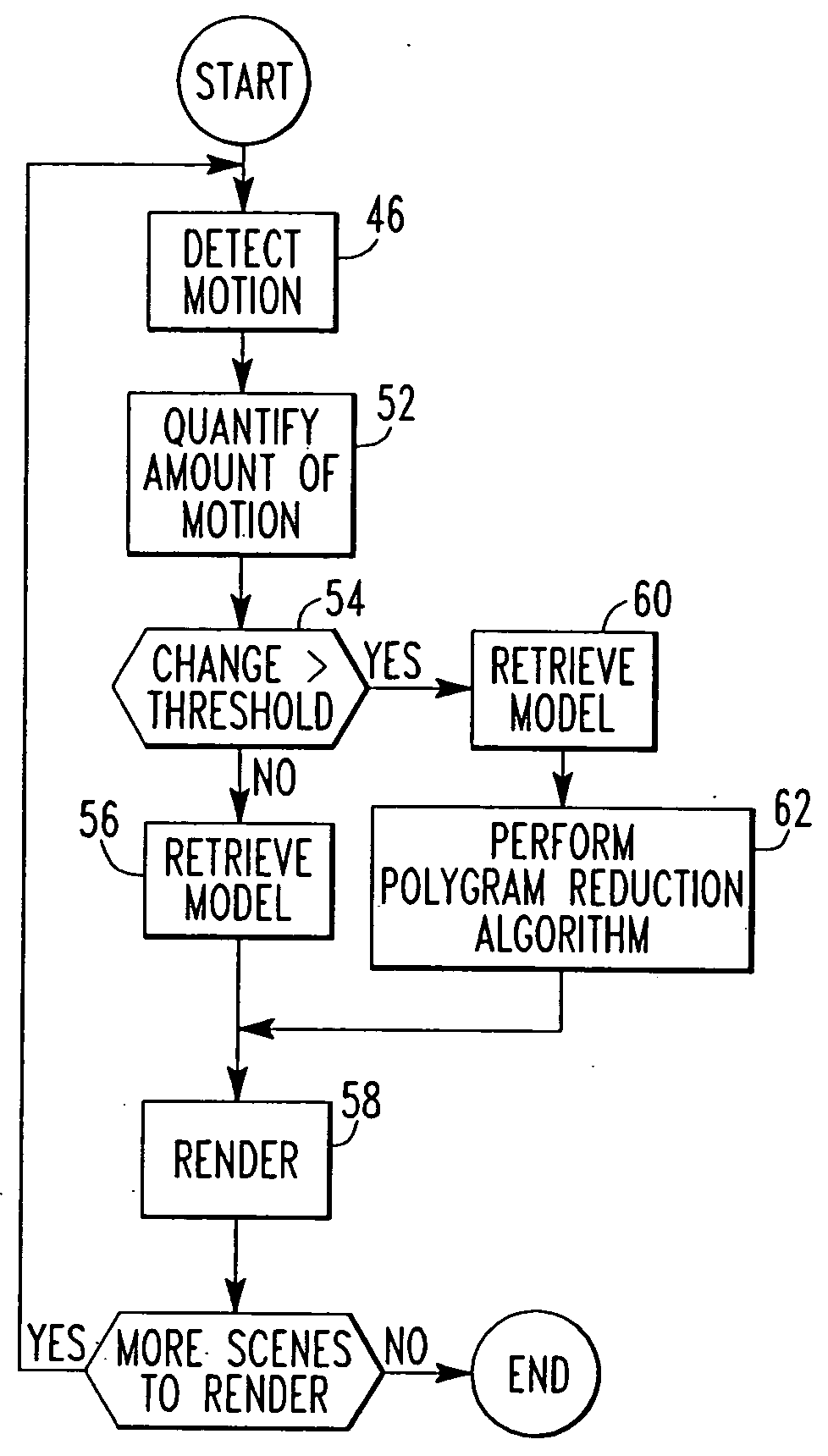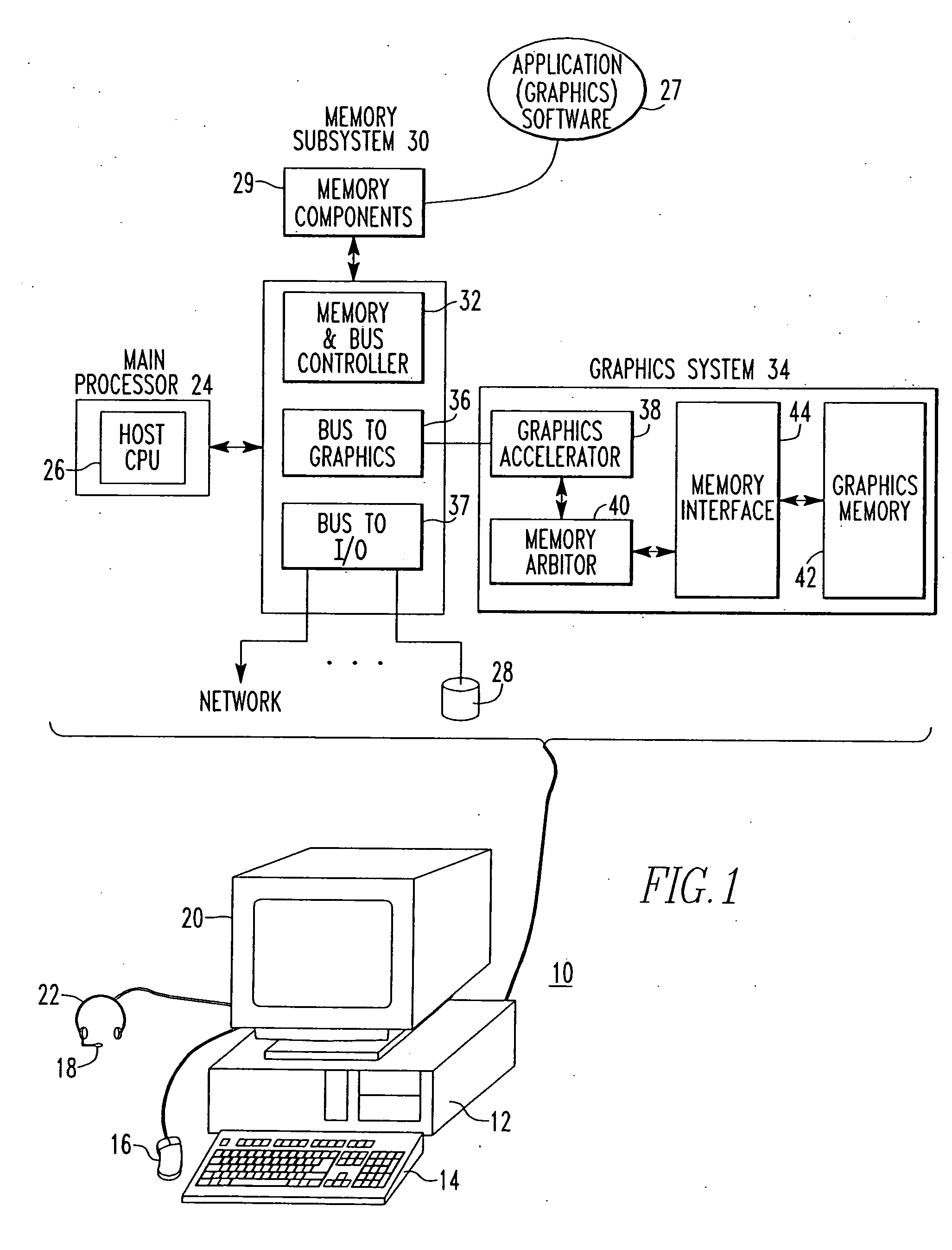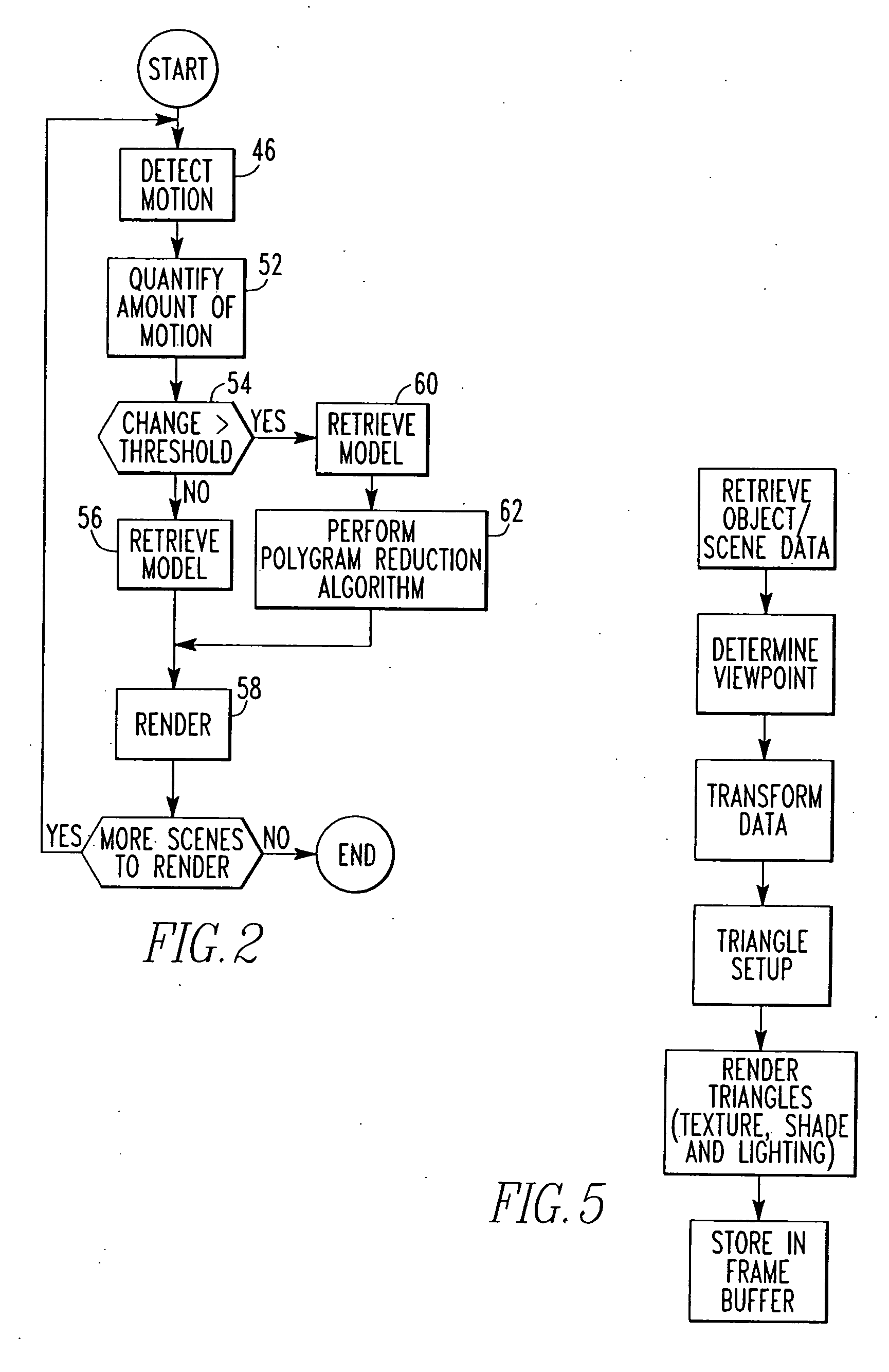Three dimensional rendering including motion sorting
a three-dimensional rendering and motion sorting technology, applied in the field of visualization methods, can solve the problems of wasting valuable rendering power for drawing, many pixels are rendered unnecessarily, and the rendering pipeline has wasted a clock cycle rendering the old pixels, so as to reduce the number of primitives used to represent the moving object at run time.
- Summary
- Abstract
- Description
- Claims
- Application Information
AI Technical Summary
Benefits of technology
Problems solved by technology
Method used
Image
Examples
Embodiment Construction
[0022]FIG. 1 is a block diagram of hardware 10 which may used to implement the present invention. The hardware 10 may be a personal computer system comprised of a computer 12 having as input devices keyboard 14, mouse 16 and microphone 18. Output devices such as a monitor 20 and speakers 22 may also be provided. The reader will recognize that other types of input and output devices may be provided and that the present invention is not limited by the particular hardware configuration.
[0023] Residing within computer 12 is a main processor 24 which is comprised of a host central processing unit 26 (CPU). Software applications, such as graphics software application 27, may be loaded from, for example, disk 28 (or other device), into main memory 29 from which the software applications 27 may be run on the host CPU 26. The main processor 24 operates in conjunction with a memory subsystem 30. The memory subsystem 30 is comprised of the main memory 29, which may be comprised of a number of...
PUM
 Login to View More
Login to View More Abstract
Description
Claims
Application Information
 Login to View More
Login to View More - R&D
- Intellectual Property
- Life Sciences
- Materials
- Tech Scout
- Unparalleled Data Quality
- Higher Quality Content
- 60% Fewer Hallucinations
Browse by: Latest US Patents, China's latest patents, Technical Efficacy Thesaurus, Application Domain, Technology Topic, Popular Technical Reports.
© 2025 PatSnap. All rights reserved.Legal|Privacy policy|Modern Slavery Act Transparency Statement|Sitemap|About US| Contact US: help@patsnap.com



